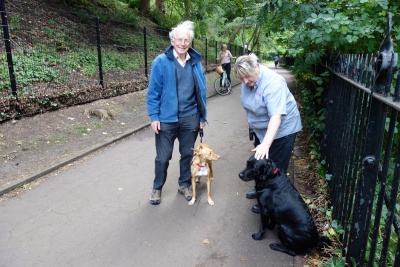‘Proposed Dean Valley Renovation: First Phase Feasibility Study
The ‘Proposed Dean Valley Renovation: First Phase Feasibility Study’ outlines recommendations for the repair and restoration of the Dean Valley walkway.

The Dean Valley walkway is part of a wider historic designed landscape that includes the three adjacent gardens of Moray Bank Gardens, Dean Gardens and Belgrave Crescent Gardens. The designed landscape falling within the Edinburgh World Heritage site is the subject of a Conservation Statement (Peter McGowan Associates July 2015) and a Biodiversity Scoping Study (Sue Bell Ecology July 2016).
This ‘Proposed Dean Valley Renovation: First Phase Feasibility Study’ follows on from these two pieces of work and focuses on the Council-owned pathway (the gardens are not owned and accessed publicly) between Dean Village and St Bernard’s Bridge. The path is an important walking route in north Edinburgh and has in more recent years become a shared cycle and pedestrian path and part of the city’s cycle network.
As identified in the Conservation Statement, elements of the designed landscape are affected by reduced maintenance and management practices, especially within the council-owned area. In particular, self-seeded trees have caused damage to the retaining wall supporting the path, the railings and the footpath surface. This feasibility study is based on condition surveys of walls, railings and surfacing - identifying damage and surface water drainage issues. Repairs and remedial works are recommended and costed.
Our recommendations
The Dean Valley Regeneration project aims to improve the shared amenity of the area for current and future generations by renovating the walkway and its surrounding historic landscape. Today, elements of the walkway’s designed landscape are affected by reduced maintenance and management practices, especially within the Council-owned area. This is partly due to self-seeded trees having caused serious damage to retaining walls, railings and the footpath surface.
The 'Proposed Dean Valley Renovation: First Phase Feasibility Study' is based on condition surveys of walls, railings and surfacing - identifying damage and surface water drainage issues, and includes recommendations for repairs and remedial works, as well as detailed proposals for local residents to comment on.
Funding from SUSTRANS and the City of Edinburgh Council, as well as private donations, has allowed us to meet the costs of reviewing footpath and cycle path options and carrying out surveys as part of the wider feasibility study. Guidance from SUSTRANS regarding shared cycle and pedestrian routes was also essential in developing our pathway recommendations.
Have your say
The development of this feasibility study was made possible by funding from sponsors and supporters, for which we are most grateful. Moving forward, we rely on the continued help and input from our friends and supporters. We therefore hope you will have your say by commenting on our feasibility study, and share it with your friends and neighbours.
Support us by finding us and liking us on Facebook or Twitter.
